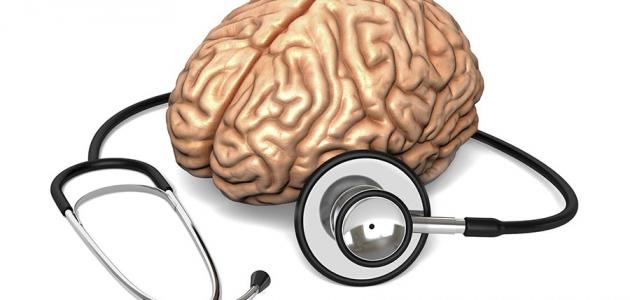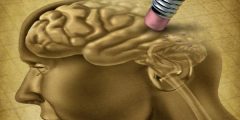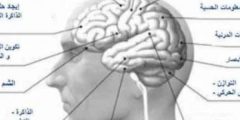Parkinson's disease
Parkinson's disease, or as it is known as Parkinson's disease, is the second most common degenerative disease that affects the nervous system, as the disease leads to disorders in the nerves responsible for producing the compound dopamine (in English: Dopamine) in the substantia nigra area (in Latin: Substantia). Nigra) in the brain, which greatly affects the movement of the affected person, and he may lose control of many of the body’s muscles. In fact, the disease develops slowly over the years, and the symptoms accompanying the disease and the speed of its progression vary from one person to another, and people with the disease may live long periods of life. It is normal before they reach the stage of inability to move. The disease often affects people over the age of sixty, but the disease can affect people of all age groups.
Diagnosis of Parkinson's disease
There is not yet a specific diagnostic test through which Parkinson's disease can be detected, and this makes diagnosing the disease difficult in some cases. This does not prevent the fact that there is a group of tests that a specialist doctor can use to diagnose the disease, including the following:
- Patient's health history: The doctor asks the patient about his health history in terms of the nature of the health problems he suffers from and the medications he takes. The patient is also asked whether there is a family history of the disease.
- Clinical examination: The doctor evaluates the patient's gait, muscle condition, sense of smell, and the signs and symptoms that the patient is experiencing.
- Blood analysis test: A blood test is usually performed to rule out the presence of another health problem that caused the symptoms, such as an imbalance in the levels of thyroid hormones, or a health problem in the liver.
- Imaging tests: Imaging tests are also performed, in order to rule out the presence of other health problems such as tumors or strokes, and the imaging methods that can be used include: magnetic resonance imaging (MRI), ultrasound imaging (in English: Ultrasound), and positron emission tomography (in English). (PET scans): This test is distinguished by its ability to detect the presence of small amounts of dopamine in the brain in some cases, which may indicate Parkinson’s disease.
- Carbidopa and levodopa: Carbidopa-Levodopa (in English: Carbidopa-Levodopa) is one of the medications used to treat Parkinson's disease. It can be used to diagnose the disease by giving the patient a specific dose of this drug compound. If the symptoms that the patient suffers from improve significantly, the disease is confirmed.
Read also:What is the treatment for nerve strain?
Symptoms of Parkinson's disease
The symptoms of Parkinson's disease vary from one person to another. The initial symptoms of the disease are often mild and may not be noticed by the patient. Symptoms usually begin on one side of the body and then appear on both sides as the stages of the disease progress, with symptoms continuing to appear more severe. On one side, symptoms associated with Parkinson's disease include:
- Tremor: The tremor usually appears in the extremities, such as the hands or fingers. The tremor associated with Parkinson's disease is characterized by its occurrence at rest, and a person may notice the occurrence of what is known as a pill rolling tremor, where the tremor causes the thumb to rub against the finger. index finger.
- bradykinesia: As the disease develops, the patient becomes afflicted with slowness of movement (in English: Bradykinesia), which results in difficulty performing some tasks and movements, and may lead to the person's steps being shortened, difficulty walking, and difficulty getting up after sitting.
- Muscle stiffness: Any muscle in the body can become stiff or stiff, which may lead to pain and limit its range of motion.
- Stature imbalance: Parkinson's disease may cause loss of balance.
- Loss of spontaneous movement: Parkinson's disease may lead to a loss of the ability to make involuntary movements such as blinking the eyes, smiling, and swinging the hands while walking.
- Voice changes: Some problems may appear in the patient's voice, such as speaking in a low and rapid voice, hesitating before speaking, and speaking in one tone without changing the pitch of the voice.
- Writing problems: The disease may cause the patient to have difficulty writing, and to write in small handwriting.
Read also:Causes of right hand numbness
Complications of Parkinson's disease
Parkinson's disease may be accompanied by many health complications, including the following:
- Difficulty thinking: The disease may lead to some cognitive problems in the patient or dementia, and these problems often occur in the advanced stages of the disease.
- Depression: Parkinson's disease may be accompanied by depression, or a number of other emotional problems such as fear and anxiety, and these symptoms can be treated using some types of medications.
- Difficulty swallowing: The patient may experience difficulty swallowing as the disease progresses, which may lead to saliva collecting in the mouth and drooling.
- Sleep disturbances: People with Parkinson's disease usually face some sleep-related problems, such as waking up frequently during sleep, waking up early, or feeling sleepy during the day.
- Bladder problems: Which is often represented by difficulty urinating, or loss of control over urine output.
- constipation: Parkinson's disease leads to poor bowel movement and constipation.
- Other complications: The disease can also lead to a number of other health complications, such as:
- Orthostatic hypotension.
- Weak sense of smell.
- Feeling tired and general fatigue.
- Sexual dysfunction.









